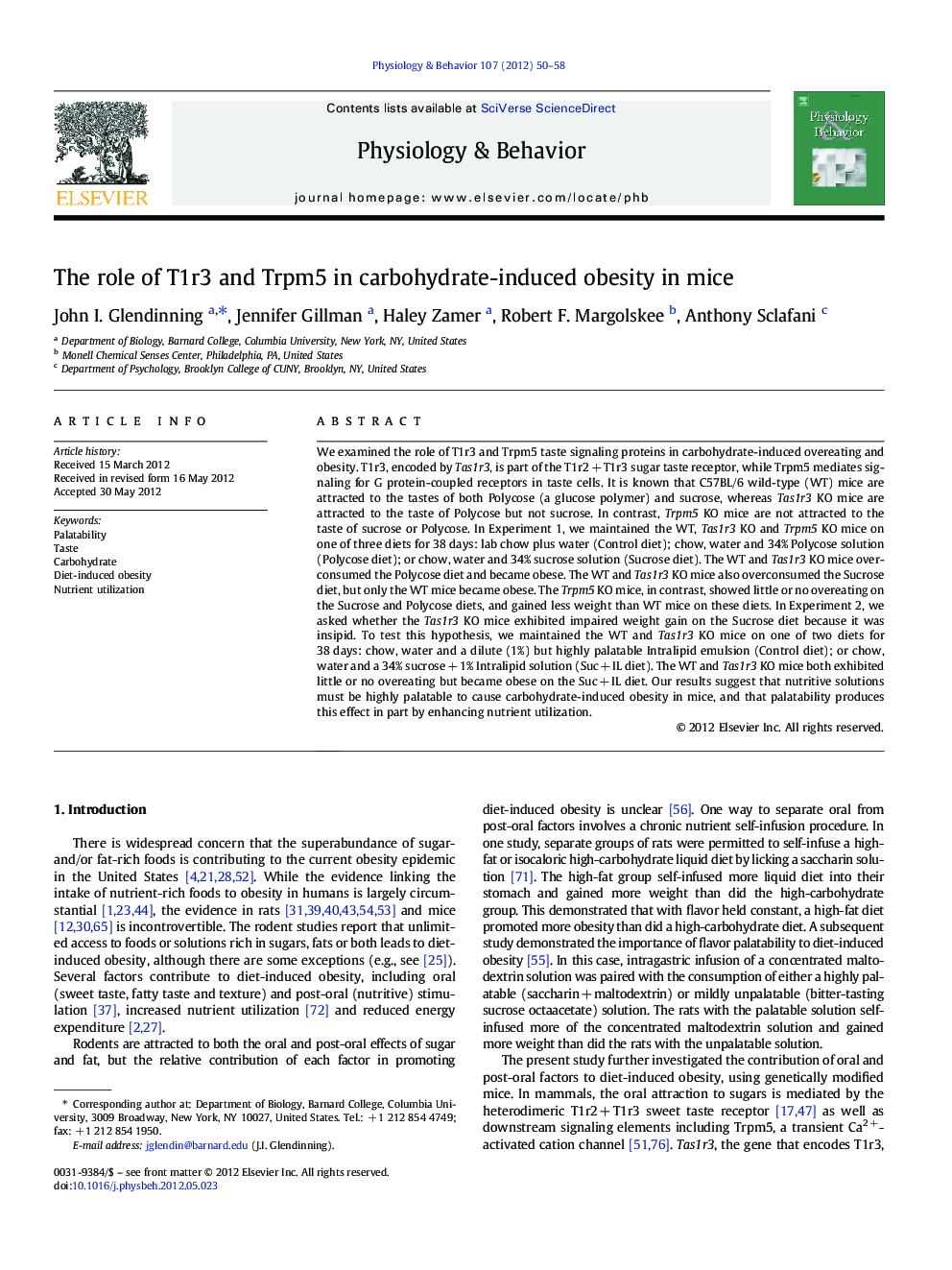| کد مقاله | کد نشریه | سال انتشار | مقاله انگلیسی | نسخه تمام متن |
|---|---|---|---|---|
| 2844445 | 1166335 | 2012 | 9 صفحه PDF | دانلود رایگان |

We examined the role of T1r3 and Trpm5 taste signaling proteins in carbohydrate-induced overeating and obesity. T1r3, encoded by Tas1r3, is part of the T1r2 + T1r3 sugar taste receptor, while Trpm5 mediates signaling for G protein-coupled receptors in taste cells. It is known that C57BL/6 wild-type (WT) mice are attracted to the tastes of both Polycose (a glucose polymer) and sucrose, whereas Tas1r3 KO mice are attracted to the taste of Polycose but not sucrose. In contrast, Trpm5 KO mice are not attracted to the taste of sucrose or Polycose. In Experiment 1, we maintained the WT, Tas1r3 KO and Trpm5 KO mice on one of three diets for 38 days: lab chow plus water (Control diet); chow, water and 34% Polycose solution (Polycose diet); or chow, water and 34% sucrose solution (Sucrose diet). The WT and Tas1r3 KO mice overconsumed the Polycose diet and became obese. The WT and Tas1r3 KO mice also overconsumed the Sucrose diet, but only the WT mice became obese. The Trpm5 KO mice, in contrast, showed little or no overeating on the Sucrose and Polycose diets, and gained less weight than WT mice on these diets. In Experiment 2, we asked whether the Tas1r3 KO mice exhibited impaired weight gain on the Sucrose diet because it was insipid. To test this hypothesis, we maintained the WT and Tas1r3 KO mice on one of two diets for 38 days: chow, water and a dilute (1%) but highly palatable Intralipid emulsion (Control diet); or chow, water and a 34% sucrose + 1% Intralipid solution (Suc + IL diet). The WT and Tas1r3 KO mice both exhibited little or no overeating but became obese on the Suc + IL diet. Our results suggest that nutritive solutions must be highly palatable to cause carbohydrate-induced obesity in mice, and that palatability produces this effect in part by enhancing nutrient utilization.
► T1r3 and Trpm5 play critical roles in carbohydrate-induced dietary obesity.
► Tas1r3 KO and Trpm5 KO mice gained little to no weight on the Sucrose diet.
► The Tas1r3 KO mice only became obese on palatable carbohydrate diets.
► The obesity appeared to reflect higher carbohydrate utilization, not caloric intake.
► We propose that T1r3 is not necessary for efficient carbohydrate metabolism.
Journal: Physiology & Behavior - Volume 107, Issue 1, 20 August 2012, Pages 50–58